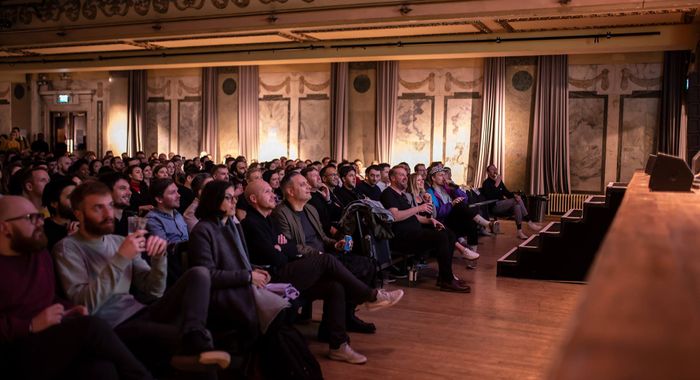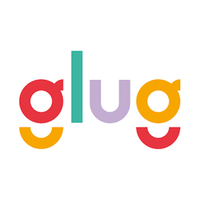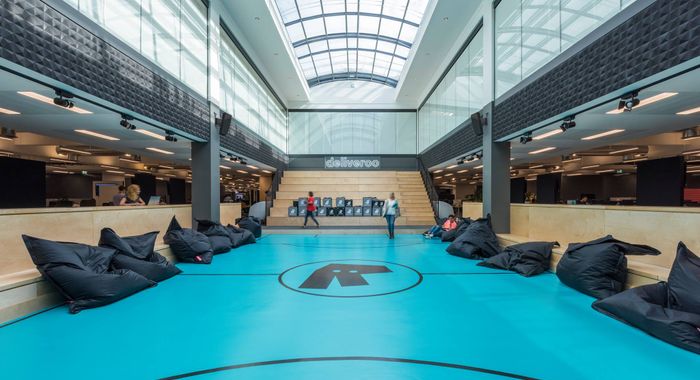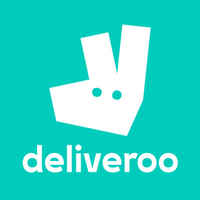Glug Profiles: Deliveroo Design - Jonny Burch, Consumer Product Lead
I spoke to Jonny Burch, Consumer Product Lead at Deliveroo, before his talk at Glug London. He told me all about how user research influences design decisions, the process of launching a rebrand globally and qualities the Deliveroo look for in people when hiring!
As the recruitment partner of Glug, we collaborate to bring you an opportunity for you to get to know Glug’s speakers in the second instalment in a series of Glug Profiles.
Hey Jonny, so you’re the Consumer Product Design Lead at Deliveroo, what exactly does this mean?
This is a bit of a weird title but, in a nutshell, it means I look after the design of all the digital products for hungry people. These products consist of an iOS app, an android app and our website, across 12 countries globally from Ireland to Australia! There’s also a whole load of other stuff behind the scenes as well which make sure those hungry people have the best possible experience when ordering from us.
What has been one of your biggest challenges so far working for Deliveroo?
Well in four years, we’ve built a lot of products, our product surface area is absolutely huge and we’re still quite a small team! There have been quite a lot of inconsistencies, visual inconsistencies and patterns that don’t match or even wording. Everything has been built so quickly to try to keep up and put out fires, so now we’re working very hard to pay off some of that debt and build and design systems to help us know what the answer is. We’re still only a very small team so we need lots of people to help us get to a point where we’ve created a truly consistent experience. That’s a challenge, a small team trying to build things very quickly!
As Deliveroo has rapidly established this huge global presence, how has this affected your team?
This rapid presence stems from solving such a clear need that people have then ultimately they’re going to share it with their friends. The product is naturally viral because food is social.
When we first started there actually wasn’t a designer for the first year, it gradually built up from our Head of Design, Simon. Then there were two designers for a year, then a third and a fourth and now we’re up to 12 but aiming to become 30 by the end of the year.
The design team is split in two, half of our designers are on the marketing side and the other half are on the product side, that’s the half that I’m in. Our team care more for the digital products, for example when you first sign up as a rider we have to build the product that helps you get on board.
Obviously, when you have more engineers and more developers and people that can build you then need people that can design and ultimately, more people that can research. The researchers are a newer team but play a crucial part in informing all the teams where people’s pain points are. We can all collaborate and prioritise what is the most important thing to build.
Do you have any top tips for people considering a career in product design?
As a product designer your brief is very open and quite often it’s a problem that someone is having or a need that users have. It’s important to be able to visually design something well but ultimately if you’re not solving the problem then you’re going to waste a lot of time. So, you need to be very focused on the needs of the people you’re solving it for. You need to want to look at data, you need to want to find insight from researchers and analysts and validate that your problem is actually a problem before you invest time designing a solution to it.
What do you look for in people when recruiting for your team?
The main qualities we look for in people are curiosity, intellectual humility, great communication skills and being an awesome collaborator. Being self-critical and wanting to explore whether or not you’re actually solving problems rather than just designing pretty stuff. Obviously, technical skills relevant to their role are crucial and having the ability to design at the right level for each problem.
It’s really just knowing what level to work at. If you have got something that is a really high-level problem, you wouldn’t go straight in and start designing pixels, but, if you had to show someone something simple like what a button looked like you’d be able to go off and do that. As you get more senior there are leadership qualities that come into play, you need to be good at critiquing other people’s work and ensuring the quality stays high. You need to be good at helping other people get better.
How do you establish customer profiles when your audience base is basically everyone?!
We don’t actually use personas, they’re tricky, they quickly become outdated and it’s easy to take them as the truth when in fact they’re a lot more complex than that. We don’t have them stuck to the wall, we don’t want people to get attached to them. In fact, the experience we create is based more on the usage of Deliveroo. Instead, we consider what time of day it is or whether you’re with friends or whether you’ve eaten well for the rest of the week, people’s habits cut through demographic data. If you’re ordering on Monday lunchtime you’re more likely to order a salad than if you’re ordering on a Friday night. In that sense, we can tailor suggestions that are based on time of day or previous orders our customers have made.
That’s a good concept! Do you find it easier to design without personas?
Well, if you have a persona, it’s easier to design having that persona in mind. However, that persona may not be accurate, which in the long run makes it actually harder to pin down what the right answers are. We do a lot of usability testing, as well as multivariate testing and AB tests so we’ll always know some baseline metrics on how well something is going, we can rely on that to steer us in the right direction.
What has been one of your favourite moments working for Deliveroo?
Last year we completely rebranded, everyone on the design team worked together towards one date, it was intense! When you have to give all your riders new kit on one day and release new versions of all your products, not only in the UK but across 12 countries and 130 cities, it gets pretty complicated but, we managed to do it! We shipped new versions of our products without damaging our core metrics, people still knew how to use them even though we changed everything at once without the ability to test it. That was an exciting few weeks!
We sponsor Glug because it’s a great environment for people to connect with one another and learn from others. Make sure you come and see us at an event if you’re looking for your next venture! We have plenty of digital and creative recruitment industry knowledge and experience to share.
Interview by: April Edgar



